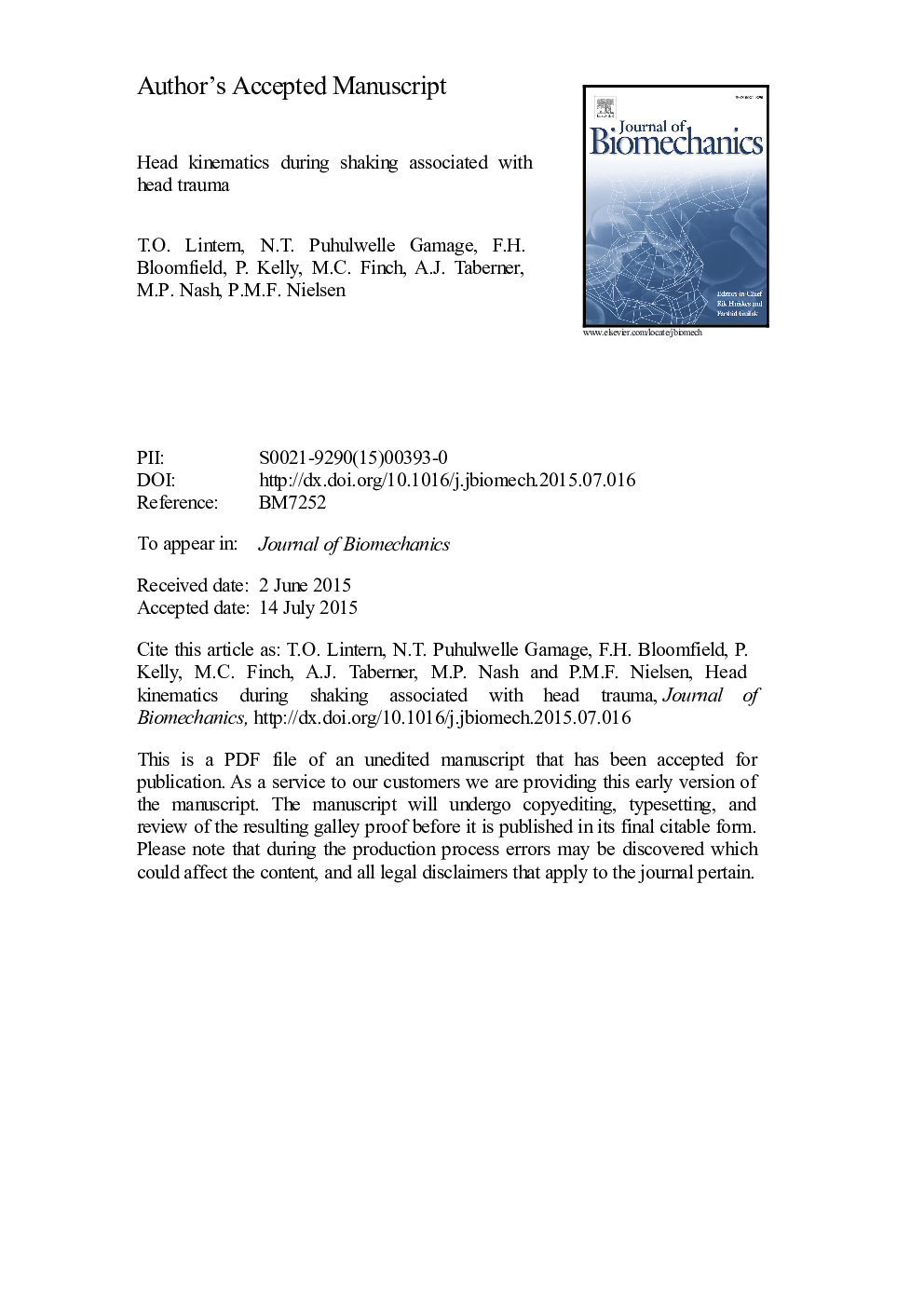| Article ID | Journal | Published Year | Pages | File Type |
|---|---|---|---|---|
| 10431285 | Journal of Biomechanics | 2015 | 17 Pages |
Abstract
Abusive head trauma (AHT) is a potentially fatal result of child abuse but the mechanisms of injury are controversial. To address the hypothesis that shaking alone is sufficient to elicit the injuries observed, effective computational and experimental models are necessary. This paper investigates the use of a coupled rigid-body computational modelling framework to reproduce in vivo shaking kinematics in AHT. A sagittal plane OpenSim computational model of a lamb was developed and used to interpret biomechanical data from in vivo shaking experiments. The acceleration of the head during shaking was used to provide in vivo validation of the associated computational model. Results of this study demonstrated that peak accelerations occurred when the head impacted the torso and produced acceleration magnitudes exceeding 200 m sâ2. The computational model demonstrated good agreement with the experimental measurements and was shown to be able to reproduce the high accelerations that occur during impact. The biomechanical results obtained with the computational model demonstrate the utility of using a coupled rigid-body modelling framework to describe infant head kinematics in AHT.
Keywords
Related Topics
Physical Sciences and Engineering
Engineering
Biomedical Engineering
Authors
T.O. Lintern, N.T. Puhulwelle Gamage, F.H. Bloomfield, P. Kelly, M.C. Finch, A.J. Taberner, M.P. Nash, P.M.F. Nielsen,
